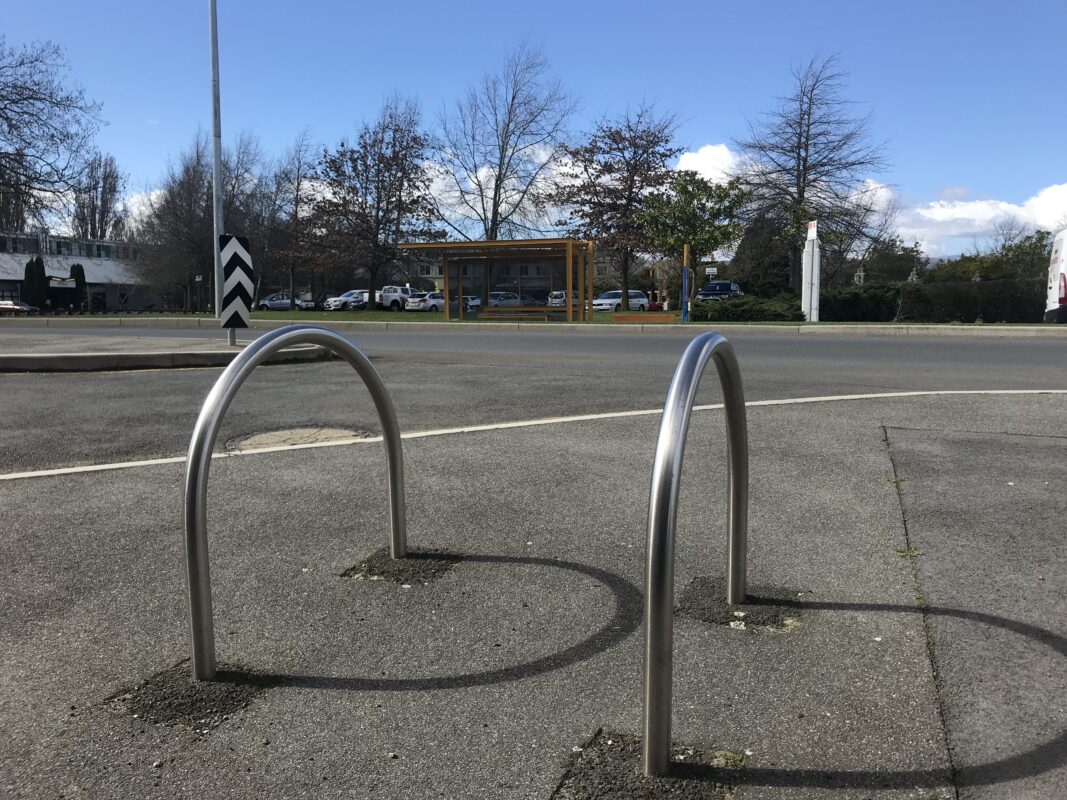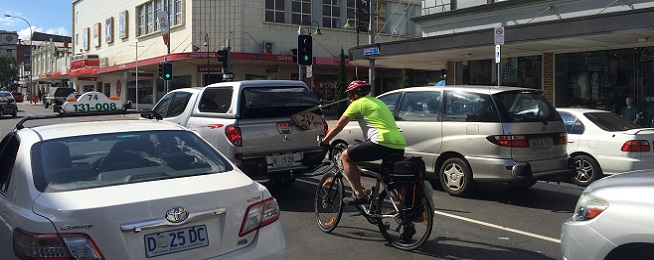It’s been years in the making, but finally a draft transport strategy is being presented to this week’s Launceston Council meeting that will govern its actions out to 2040.
The council will decide whether to release the strategy for a 4-week public consultation period where you’ll get a chance to comment on the thrust of the strategy, as well as the action plan for the next 20 years.
The need to offer more transport choice is the overriding theme for the strategy, with increased bicycle use highlighted as one way to tackle shorter trips:
“Cycling should be a ‘go-to-choice’ for short trips throughout Launceston. Launceston has a lot of cycling potential with the right network and infrastructure in place. With a decentralisation of services and shops to our activity centres, the opportunity to choose cycling is greater. Technological advances such as e-bikes can also mitigate existing barriers like topography.”
In support of this, the strategy includes maps which show that cycling is a more efficient way to travel than walking or public transport, with more activity centres and health and educational facilities accessible within a 15-minute bike ride.

The strategy is also brave enough to name up the problems caused by overuse of private vehicles and the need to reduce the availability of cheap, abundant parking as a way of managing the problem.
The council is to be congratulated for putting forward a cohesive argument for changing the way people move around Launceston, but the slow timeline for this work lets the strategy down somewhat.
It’s clear from the strategy and action plan that better cycling facilities are needed but you’ll be waiting a while for them. Almost of all the actions relevant for riding a bike have been put in the medium-term basket, that is, in the next 4–10 years.
We’d like to see a greater commitment to getting cycleways in place sooner rather than later, so that in the short-term (0–3 years) all the planning, consultation and development approvals for the 2 city-connector cycling corridors are put in place ready to build once funding is obtained, which may not be until the medium-term timing.
We also know some of the missing links in the existing network, such as between the Rocherlea–Mowbray path and the Inveresk path, these could be acted on within the 0–3 year timeframe.
Some of the actions listed are already underway but it would be beneficial if the council provided support for them, such as Bicycle Network’s Ride2School program which operates in all schools statewide but hasn’t had high engagement from schools in the Launceston area. The program already works with schools on developing travel plans (L2.1) through it HandsUp! counts and active travel maps, and cycling education (H1.1). Bicycle Network can also provide adult bike skills sessions (H1.1).
Actions and timing
The key themes of the strategy all include actions around improving bicycle transport:
- A Liveable Launceston
- A Healthy Launceston
- A Connected Launceston
Ideas for action are presented under each heading then placed within a timeframe of 0–3 years, 4–10 years or 10–20 years.
A Liveable Launceston
L1.2 - Incentivise provision of active and public transport modes in development areas – The City of Launceston will work with the Tasmanian Government to develop a state-wide planning scheme that incentivises developers to include walking, cycling and bus provisions in or near their sites wherever practicable: 4–10 years.
L1.3 – Maintain the regional network of shared paths and invest in feasible extensions – the City of Launceston will identify appropriate key locations to construct more shared paths to extend and improve the existing regional network’s connectivity: 4–10 years.
L1.4 - Integrate recreational transport with tourism and the wider transport network – the linkage of recreational spaces to the city is not currently legible or clear to residents and visitors: 4–10 years.

A Healthy Launceston
H1.1 - Improve education and training opportunities for cycling across all age groups – The City of Launceston will work with local cycling groups to identify and support improved training opportunities across all age groups and support a transition back to cycling: 0–10 years.
H1.2 – Provide tiered end-of-trip facilities at key council venues – Due to the physical exertions of travelling by active transport modes, providing end-of-trip facilities is vital for making cycling attractive as a modal choice: 4–10 years.
H1.3 - Encourage employers to provide end-of-trip facilities – The City of Launceston will draw on examples of best practice to develop a package of material for employers, ranging from information, checklists, and templates for developing and implementing travel planning to providing travel planning services, and subsidies for equipment: 11–20 years.
A Connected Launceston
C2.1 – Maintain and expand cycle paths and supporting infrastructure on priority routes – To make sure that cycling is a viable option for travelling, we need to review and investigate opportunities to provide more cycle lanes on/off roads, particularly separated cycle lanes to appeal to less confident cyclists. Currently, the CBD area (and other regional links) has a large gap in separated cycle lanes. Additionally, the City of Launceston will investigate opportunities to provide the CBD area with a least one north-south and one east-west separated cycle lane: 4–10 years.
C3.1 - Develop a Street Design Guide for Launceston to align with the city’s aspirations – Importantly, the guide can provide direction on often overlooked designing for vulnerable users: 0–3 years.
C4.1 – Improve the interface across different modes to facilitate multimodal trips – To ensure these multimodal trips are well facilitated, the city will provide smoother transfer between modes, including bike parking near bus stops. The City of Launceston will also advocate for buses to carry bikes (either on external racks or inside low-floor buses): 4–10 years.
C4.2 - Develop a one-stop online portal for active transport, public transport and micro mobility – The platform will include any implemented improvements (such as new bike-share program, expanded cycle lanes, increased bus service frequency, etc.) to ensure people receive the most up-to-date information: 4–10 years.

Your Voice Your Launceston
If you haven’t already registered on the https://yourvoiceyourlaunceston.com.au/ website, do so now so you will be alerted when the transport strategy is opened for your comments.


